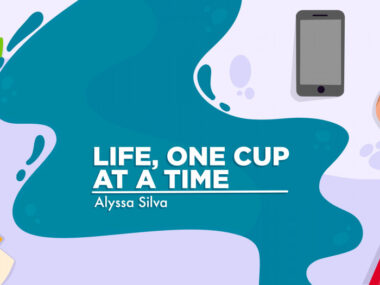Letting kids ask questions leads to greater understanding
Providing a simple, honest answer can help educate children about disability
Written by |

With a fresh cup of coffee balanced on my knee, I quickly scanned my church’s cafe area for a place to land where I could have a supportive tabletop. The only vacant spot at a table was next to a 7-year-old boy who sat alone with a cup of hot chocolate. I vaguely knew him from the Sunday school check-in center, enough to greet him by name and ask if I could sit with him. He nodded and used his sleeve to wipe the chocolate mustache from his upper lip.
As I gently blew on my coffee to cool it down, he stared hard at me and asked, “Why do you look like a little kid?”
Rude, I thought, weirdly amused and offended at the same time. So I shot back, “Why do you look like a little kid?”
That made him smile. “Because I am a little kid” was his sensible answer.
“Touché,” I said and sipped my coffee.
But he wasn’t done; oh no, my snarky responses only encouraged him, and a rapid-fire interrogation ensued. “How do you go to bed? How do you get dressed? How do you get in the car? How do you go to the bathroom?”
Sigh. So much for a relaxing coffee break. And where was this kid’s mom? Or grandpa? Or off switch? I took another sip of coffee as I weighed my options. I could tell him to stop being overly inquisitive and take my coffee in the women’s bathroom stall, where I could caffeinate alone in peace. But something told me this opportunity was special, and I shouldn’t waste it.
Welcoming kids’ queries
You see, there are so many times when I’m out in public, my SMA visible, when children stare at me and loudly ask their guardian: “What’s that? Why is she in that thing? What’s wrong with her?” Instead of answering them, the guardian shushes them or sternly tells them that isn’t polite and drags them away as quickly as possible.
It’s a shame, because these are perfect chances to give a brief, positive explanation: “That’s called a wheelchair, and it’s a cool machine that helps her move around because her legs don’t work like yours.” I wouldn’t even mind if the adult deferred to me for answers, possibly reframing the questions in kinder words: “Would you share with my son why you use a wheelchair?”
While it may be uncomfortable or embarrassing in the moment, it’s valuable for that child to get a simple and honest answer that validates their question, curiosity, and interest. If I can have a meaningful interaction with them, they’ll find that I’m just a person who’s friendly and approachable, and they might have more in common with a person living with SMA than they thought.
The more opportunities kids have to engage with people of all abilities, the more they’ll learn and grow, accept and understand, and become better human beings.
So there I was, in an impromptu one-on-one interview with a child at church, and it was uninterrupted and not intercepted by well-meaning adults. I found it interesting that his questions weren’t about my chair or my disease, but about how I do everyday things. Even his first question indicated that he was studying me and trying to reconcile my short legs, petite shoulders, and small feet (that are almost the same size as his) with my adult mannerisms.
The more I thought about it, the more I liked this precocious kid’s thoughtfulness and believed it was only fair to give him real answers.
Armed with this conviction, I adopted his style of speaking in bullet points: “Well, I have a machine that picks me up out of my wheelchair and puts me in bed, I have friends who help me get my clothes on, I have a ramp that I roll on to go into my car, and my machine and my friends work together to help me when I’m in the bathroom.” I smiled and shrugged. “Any other questions?”
His big, round eyes took me in and he nodded again. I could see him processing all this new information. “How old are you?”
“Sorry, kid,” I said as I drained the last of my coffee and put my wheelchair in reverse. “Some topics are just off limits.”
Note: SMA News Today is strictly a news and information website about the disease. It does not provide medical advice, diagnosis, or treatment. This content is not intended to be a substitute for professional medical advice, diagnosis, or treatment. Always seek the advice of your physician or other qualified health provider with any questions you may have regarding a medical condition. Never disregard professional medical advice or delay in seeking it because of something you have read on this website. The opinions expressed in this column are not those of SMA News Today or its parent company, Bionews, and are intended to spark discussion about issues pertaining to spinal muscular atrophy.








Leave a comment
Fill in the required fields to post. Your email address will not be published.